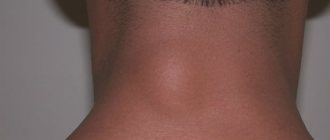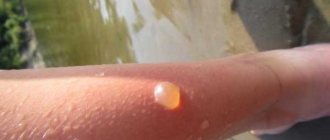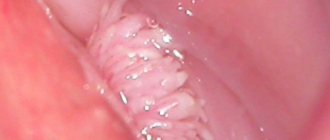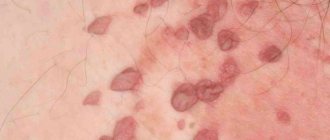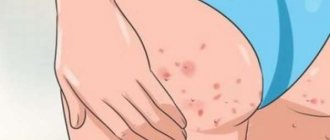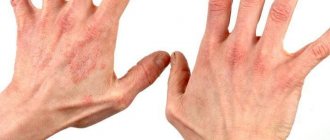Many have experienced that unpleasant feeling when, burning the skin, blood rushes to the face. From frost or embarrassment, a slight blush goes away quite quickly. But there are situations when the skin remains in this state for a very long time, representing a cosmetic defect that gives rise to understandable complexes.
Before going to a beauty salon to get your skin in order, it is advisable to initially find out why your face is red: finding the cause will help you take measures to eliminate it. This will allow you to get rid of unwanted consequences. A variety of factors can provoke such a phenomenon.
Causes of red cheeks in adults and their symptoms
Redness of the skin on the cheeks can be physiological or pathological. Physiological causes do not pose a health risk, and the symptom goes away on its own after the provoking factor is eliminated. Pathological causes can pose a serious danger. Urgent examination followed by subsequent therapy is required.
Natural causes
Red cheeks in an adult (natural causes are associated with the close location of capillaries to the surface of the skin) can be caused by the following provoking factors:
- physical or emotional stress (stress, anxiety, heavy lifting). The conditions are accompanied by increased blood flow and dilation of blood vessels in the cheeks;
- eating hot and spicy foods. They have a similar effect on blood vessels;
- prolonged exposure of the body to an inclination (washing the floor, work associated with inclination). As a result, blood flow to the facial part increases;
- exposure to cold wind. Blood vessels dilate to maintain skin thermoregulation;
- washing with cold water has a similar effect;
- long stay in a stuffy and hot room. Capillaries dilate to improve oxygen delivery;
- exposure to sunlight (causes vasodilation);
- squeezing the muscles of the cheek (resting on the hand, lying down) leads to a deterioration in blood circulation. After eliminating the compressive factor, a sharp restoration of blood supply occurs, accompanied by redness of the skin;
- rubbing the epidermis (massage, increased application of cream) causes an increase in blood supply;
- hitting the cheek against an object or during a fight. Redness is caused by a temporary increase in blood flow.
Natural causes are accompanied not only by an increase in the color of the cheeks.
There may be additional symptoms such as:
- heat in the cheeks;
- sudden loss of strength;
- pain when touching the affected area.
Physical reasons do not cause a malfunction in the body, but frequent redness can provoke a deterioration in the condition of the blood vessels on the cheeks. Therefore, if possible, it is recommended to avoid provoking factors.
Hypersensitivity
Redness of the epidermis on the cheeks can be caused by increased sensitivity of the skin to any external influence. The pathology is caused by a disruption of the immune system. As a result of even the slightest influence of a provoking factor, blood flow increases and blood vessels dilate.
Reasons for the development of redness due to hypersensitivity:
- windy weather (even with light wind);
- exposure to sunlight or temperatures below zero;
- a sharp change in external temperature indicators (change from heat to cold and vice versa);
- water of increased hardness;
- eating (even cold dishes);
- light pressure on the cheek;
- wiping your face with a hard towel;
The cause of red cheeks in an adult may be a simple failure to comply with hygiene rules.
- slight disturbances;
- calm walking over long distances.
Redness of the cheeks due to hypersensitivity may additionally be accompanied by:
- burning and itching;
- a feeling of heat not only on the cheeks, but throughout the body;
- soreness at the site of redness;
- increase in body temperature.
The pathology cannot be treated. But you can strengthen the condition of blood vessels by taking vitamin complexes. An examination and a therapist are required.
Dermatological problems
Redness of the cheeks can be a symptom of dermatological diseases.
Skin pathologies with this symptom include:
| Types of diseases (division is made according to the type of pathogen) | Brief list of diseases | Reasons for development | Accompanying symptoms |
| Fungal |
|
|
With severe lesions, loss of strength, increased body temperature and the presence of purulent formations are possible. |
| Bacterial |
| ||
| Viral |
| ||
| Immune |
| Transmission of the disease occurs at the genetic level. |
Dermatological causes are distinguished by the presence of additional symptoms. Diseases are dangerous due to the development of complications and the addition of secondary infections. Treatment is prescribed by a dermatologist after examination.
Infectious causes: measles, rubella
Red cheeks (in adults, as in children, the causes are caused by the body's response to the pathogen) can be a symptom of an infectious disease.
Changes in cheek color are characteristic of the following diseases:
| Name of the disease | Reasons for the development of the disease | Associated symptoms |
| Measles | Transmission of infection occurs through contact with a carrier. After recovery, immunity to the disease is formed for life. Since these diseases are vaccinated in childhood, the infection can only affect an unvaccinated person. Rubella can be transmitted from mother to child in utero, causing developmental damage to the fetus. |
|
| Rubella |
|
Freezing
Many people's faces become very red in the cold. Moreover, some people develop a light, healthy blush on their cheeks, while others’ skin takes on a very unpleasant purple tint. This spoils the appearance and looks unpleasant.
Indeed, for delicate, sensitive, thin skin, cold air and low temperatures are a very serious test. It is stressed when moving from warm to cold. Such redness can lead to more unpleasant consequences: the appearance of veins and peeling.
In order for the frost to cause a healthy blush on the cheeks, and not painful beauty, in winter you need to take appropriate measures:
- half an hour before going outside, apply a protective cosmetic cream to the skin;
- dress warmly and prevent hypothermia;
- if your face turns very red and constantly in the cold, you can contact a dermatologist, who in such cases can prescribe injections of nicotinic acid;
- if possible, cover your face with a wide scarf or handkerchief;
- drink ascorutin or aevit.
These tips on what to do if your face turns red when exposed to low temperatures will help you cope with this problem, and your skin will have a healthy, radiant color at any time of the year. Do not expose it to such stress in winter - and then you will not be afraid of any redness.
Differential diagnosis
Redness of the cheeks is not only a cosmetic defect, but can be a symptom of a disease. To eliminate redness, you need to contact a therapist to identify the cause of the development of this symptom and determine subsequent treatment.
Differential diagnosis includes the following procedures:
1. Collection of information from the patient’s words:
- when did the rash appear and what preceded it;
- the presence of chronic diseases in the patient and immediate relatives;
- what additional symptoms are present?
2. Complete examination of the patient:
- temperature and pressure measurement;
- illumination of the affected area with a Wood's lamp to identify the fungus;
- identification of soreness and peeling of the reddened area;
- palpation of the abdomen to identify pathologies in the digestive tract;
- examination of the oral mucosa.
3. Taking tests to determine ESR , leukocyte count and immunoglobulin E. These indicators will help identify the infectious and allergenic nature of the appearance of the rash.
4. Scraping the epidermis from the cheeks. To determine the type of pathogen.
5. Carrying out an immunogram to determine the state of the immune system.
After collecting information, examination, and receiving test results, an examination is carried out by specialized specialists. They also prescribe treatment.
Drug treatment for various causes of redness
Red cheeks in an adult (the causes of redness are identified during examination) are a symptom of a pathological condition of the body and can be eliminated through the use of medications.
Medicines prescribed to eliminate the cause of red cheeks:
- for natural causes and hypersensitivity, medicinal creams are prescribed to protect the skin from external influences (Bepanten, Panthenol, Radevit) and sedatives to prevent nervous tension (Tenoten, Motherwort, Valerian);
- For dermatological pathologies, antifungal (Nystatin, Ketonazole, Terbinafine), antibacterial (Amoxicillin, Biseptol, Solutab) and antiviral (Kagocel, Remantadine, Ingavirin) medications are prescribed, depending on the type of pathogen. Additionally, ointments/creams may be prescribed to accelerate the restoration of the skin and relieve itching (Fenistil, Skin-Cap, Elidel);
- for redness of the cheeks due to infectious diseases, medications are prescribed to eliminate itching (Loratadine, Zyrtec, Tacropic) and antipyretics (Ibuprofen, Paracetamol, Nurofen);
- To eliminate allergies, antihistamines (Fenkarol, Lomilan, Fexadin), enterosorbents (Polysorb, activated carbon, Polyphepan), antipruritic and restorative ointments (Zinocap, Elokom, Akriderm) are used;
- for internal pathologies, the choice of drugs depends on the location of the pathology (gastrointestinal tract, cardiovascular or nervous system). Medicines are prescribed by specialists, and the exact course of treatment is discussed.
Self-treatment, without examination and interview with a specialist, can lead to a worsening of the condition, and in severe cases, death.
Excitement
Many people don't understand why their face burns and turns red when they perform somewhere or even talk to someone. Indeed, when excited, the face may suddenly begin to become covered with an unhealthy blush or bright red spots. All this looks unattractive and unaesthetic. What is the reason?
In medicine, this phenomenon is called erythrophobia (translated as “fear of being red”). It is dictated by fear of public speaking or communicating with people. Why is this happening? According to doctors, the reason is in the autonomic nervous system, which reacts so inadequately to environmental factors. When there is a load on it, the need for oxygen increases, and this causes the skin vessels to expand. The blood flow increases and the face turns red. What to do in such cases?
- sign up for a session with a psychotherapist;
- take sedatives;
- learn to control yourself;
- avoid stress, tension, emotional outbursts.
If you are a very shy person by nature and your face often turns red when communicating or speaking, be sure to use these tips to get rid of this cosmetic defect.
Folk recipes
Folk remedies can reduce irritation and redness on the cheeks, but do not eliminate the cause of their appearance. Therefore, they can be used in complex treatment with medications or for natural causes of redness.
Effective recipes:
- mix dry yeast (10 g), sour cream (25 ml) and any fresh fruit puree (20 ml). You should get a homogeneous mass. Let the product sit for 30 minutes. Apply to cheeks and let the mixture dry. Rinse off with warm water;
- combine sour cream and chopped parsley in equal proportions. Apply to skin for 15 minutes. Remove with water;
- steam oatmeal in milk. They should swell completely. Apply the product to the cheeks and leave for 20 minutes. After completing the procedure, wash with warm water;
- wash your face with a decoction of chamomile or calendula. You need to steam 1 sachet per 150 ml of boiling water. Finally, moisturize the skin with baby cream. Especially recommended for children;
- mix sour cream and olive oil in equal proportions and leave for 20 minutes. Remove the composition with a cotton pad;
- In the morning and before bed, wipe your cheeks with freshly squeezed aloe juice;
- grate the peeled potatoes and apply the resulting paste on your face for 20 minutes. Rinse off the product with warm water.
During the period of reddening of the cheeks, it is prohibited to carry out cleansing cosmetic procedures due to the likelihood of damage to the capillaries.
How to get rid of a red face?
Before taking any action, it is necessary to find out the cause. Often you can’t do this without a specialist. Therefore, it would be more logical to ask a dermatologist the question of what to do if your face is red. Otherwise, you can harm yourself by using folk remedies inappropriately.
Basically, the treatment of redness directly lies in the narrowing of blood vessels located close to the skin. It is the disruption of their work that gives the face such an unpleasant tint. It is often proposed to correct this situation with the help of electrocoagulation and cryomassage. Often, special products aimed at narrowing pores and whitening masks made from fermented milk products also help when it comes to hyperpigmentation.
If the redness of the facial skin is associated with an allergic reaction, you can independently identify the allergen and avoid contact with it. It would be good to take general-purpose anti-allergy medications. For example, diazolin. You can wipe your face with a cotton swab dipped in a decoction of chamomile and valerian root. For prolonged stress, which appears as redness of the face, it is recommended to take sedatives. For example, valerian or novopassit.
There are also general recommendations regarding correction of diet and lifestyle in general. It is advisable to quit smoking and drinking alcohol. They have a detrimental effect on the condition of the skin and the “work” of blood vessels. Food should be varied. The diet should consist of fresh vegetables and fruits, dairy products, low-fat fish and meat.
Top
Vitamins
Taking vitamin complexes is recommended for any reason for redness of the cheeks. The drugs help strengthen the immune system and restore the strength and patency of blood vessels.
Therapists and dermatologists recommended the following remedies:
- Duovit;
- Aevit;
- Complivit;
- Alphabet;
- Centrum.
Vitamins do not cause any particular harm to the body, but it is better to discuss the dosage and course of administration with your doctor.
Since hypervitaminosis can also cause redness on the cheeks. In an adult, changes in the color of the cheeks can be caused by the presence of pathologies in the body, frequent stress and alcohol/nicotine abuse. It is possible to eliminate redness only after undergoing a full examination and identifying the cause.
For natural causes, it is enough to enrich the diet with vitamins (in tablets or fresh fruit) to restore the strength of the capillaries on the cheeks.
Author: Kotlyachkova Svetlana
Article design: Mila Friedan

